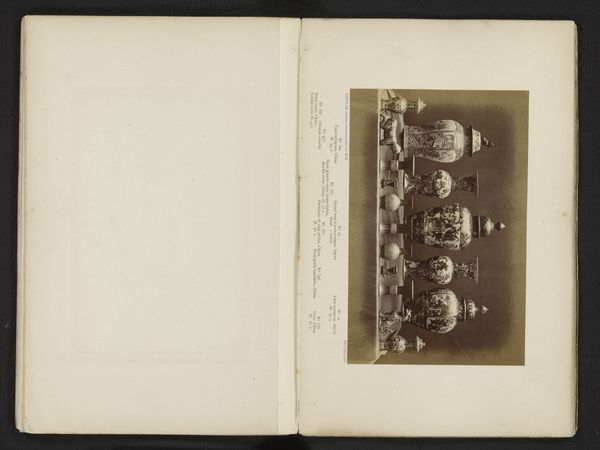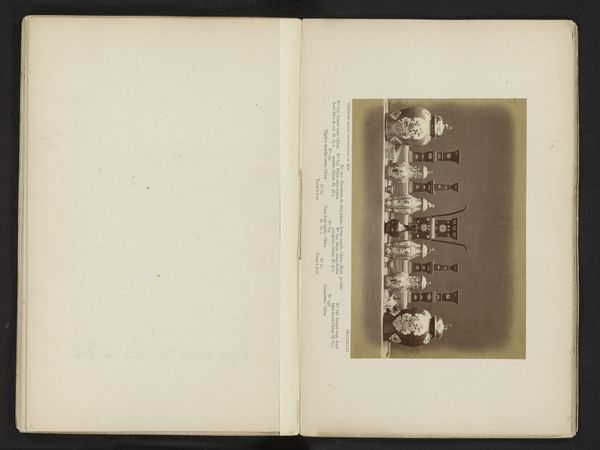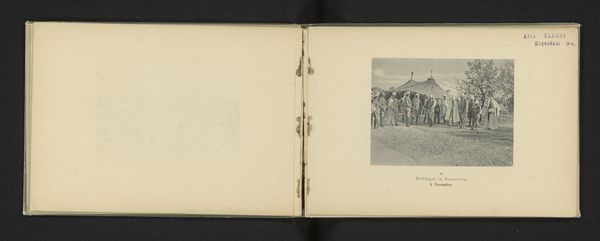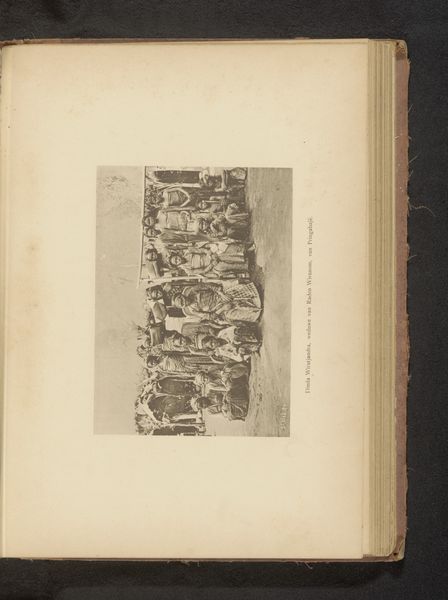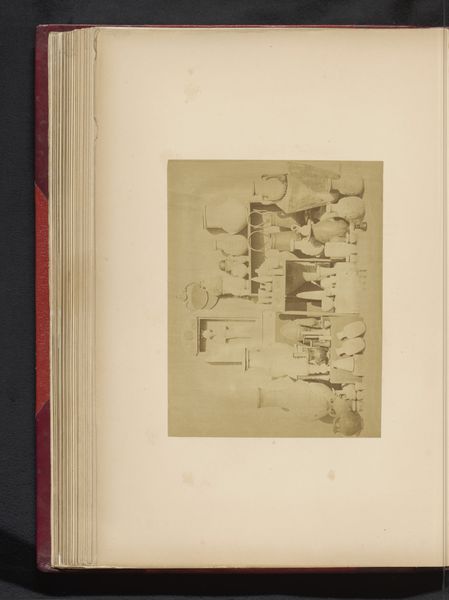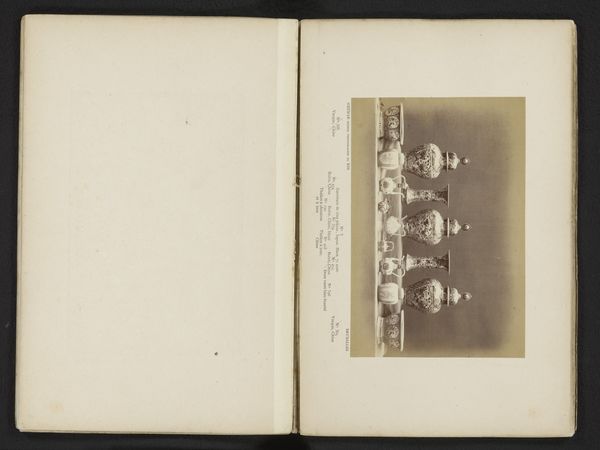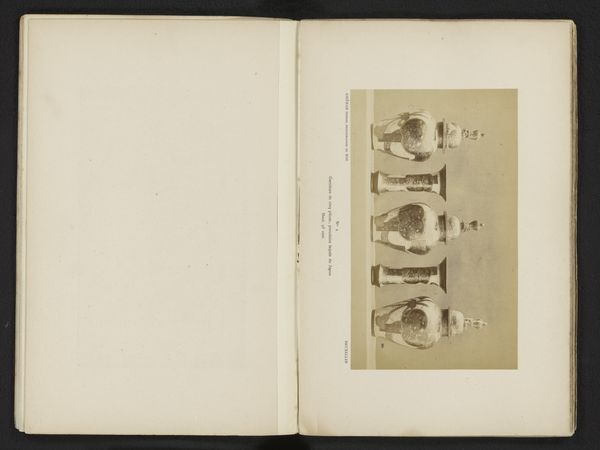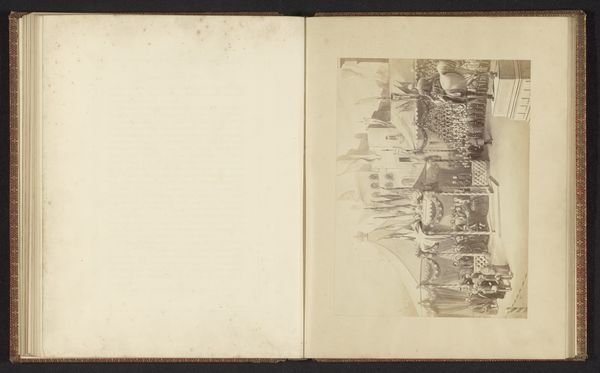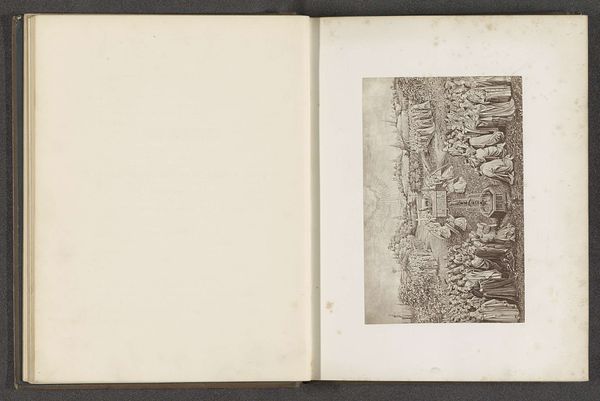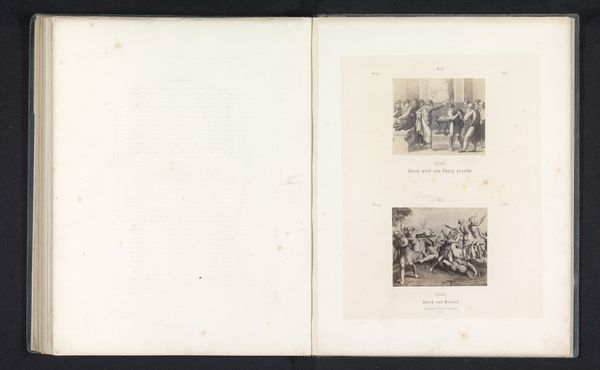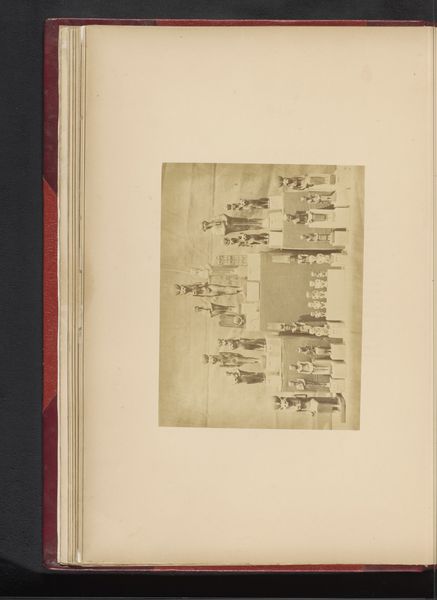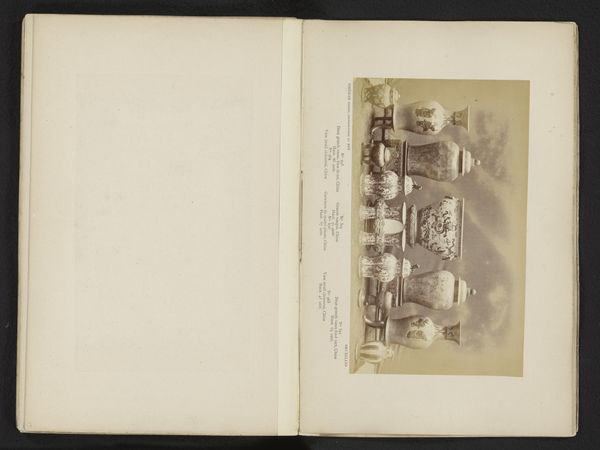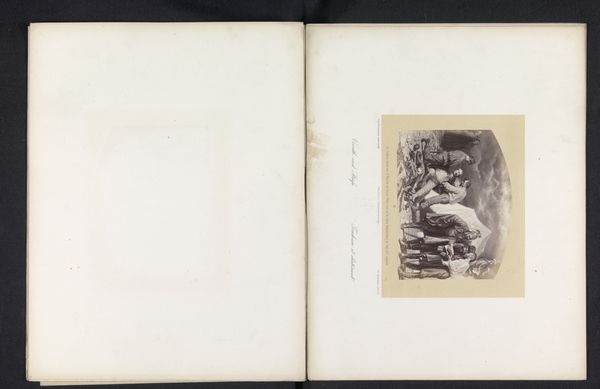
print, ceramic, photography, albumen-print
#
aged paper
#
homemade paper
#
paper non-digital material
#
ink paper printed
# print
#
sketch book
#
ceramic
#
vase
#
paper texture
#
photography
#
personal sketchbook
#
folded paper
#
orientalism
#
decorative-art
#
paper medium
#
sketchbook art
#
albumen-print
Dimensions: height 121 mm, width 194 mm
Copyright: Rijks Museum: Open Domain
Curator: This is an albumen print dating from before 1875, attributed to Ghémar Frères. It's titled "Twintig objecten, waaronder Chinese en Japanse vazen," or "Twenty objects, including Chinese and Japanese vases." Editor: Immediately, the photograph conveys a feeling of studied exoticism, a collecting and cataloging of Oriental aesthetics presented in sepia tones that evoke the past. The formal arrangement is quite striking. Curator: The albumen printing process itself is crucial to understand its texture. Albumen, derived from egg whites, coats the paper and creates this distinctive glossy surface, trapping light and lending depth to the print. This speaks to 19th-century photographic practices and the labor involved in image-making. Editor: Observe how the linear arrangement and repetition invite a formal comparison between the objects. The image uses the formal language of composition and display as a sign system for interpreting value. It allows us to discern subtle variances in shape, color, and size. Curator: Yes, and we must not overlook the material and social context. Prints like these were not merely aesthetic objects; they facilitated the study, dissemination, and even consumption of foreign cultural artifacts by a European audience. These albums allowed for armchair travel. Editor: I find the relationship between image and object to be of interest here. How the albumen print renders the vases transforms them. Light, texture, form—these are all altered to create an image that operates independently of the objects it depicts. Curator: Exactly, by making this study accessible, the work fuels Orientalist markets and imaginations, creating tangible economic opportunities for production and distribution, while potentially misrepresenting these goods within Western cultural frameworks. Editor: Ultimately, the visual arrangement and rendering directs the viewer's interpretation. Curator: Considering both the technical production and the sociocultural context opens fascinating doors into our perception of culture and consumerism at that moment in time. Editor: Indeed, it offers insight not only into these objects, but also the Western gaze through which they are viewed.
Comments
No comments
Be the first to comment and join the conversation on the ultimate creative platform.
